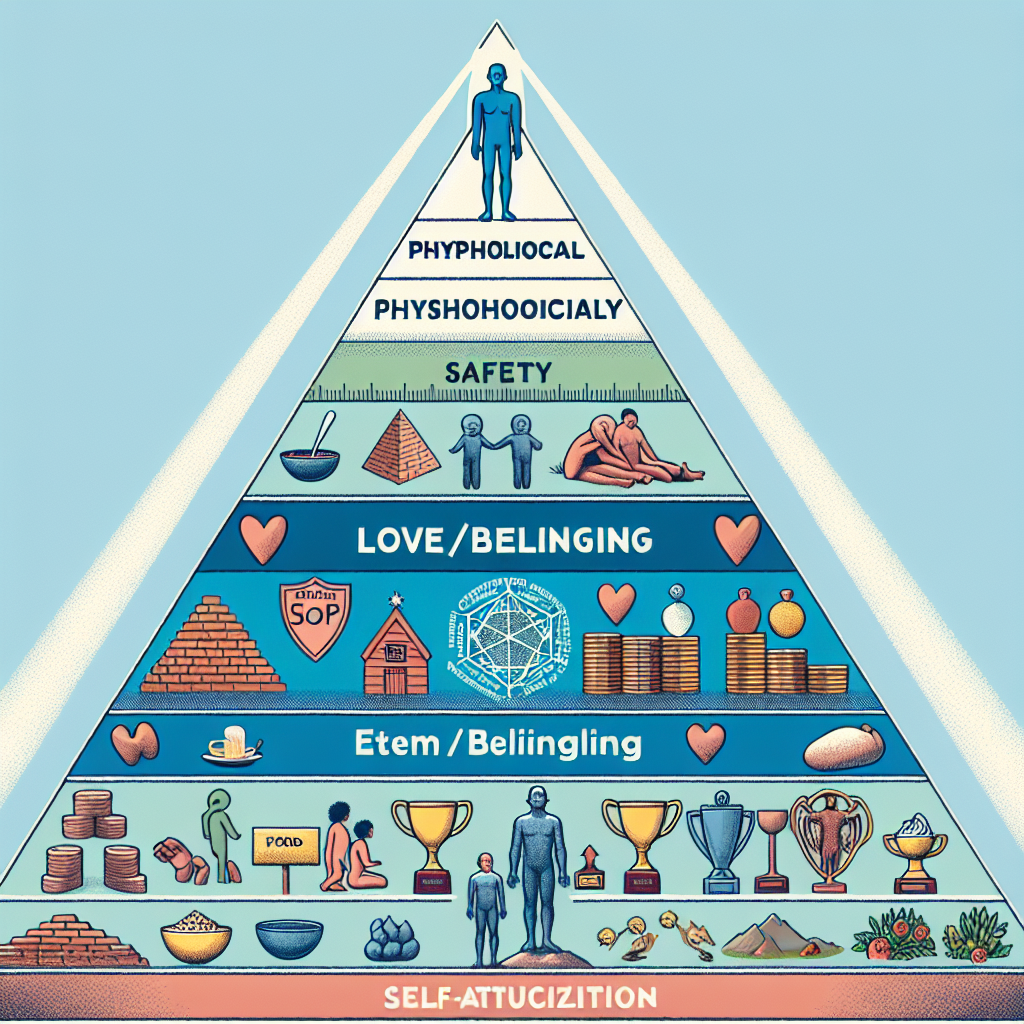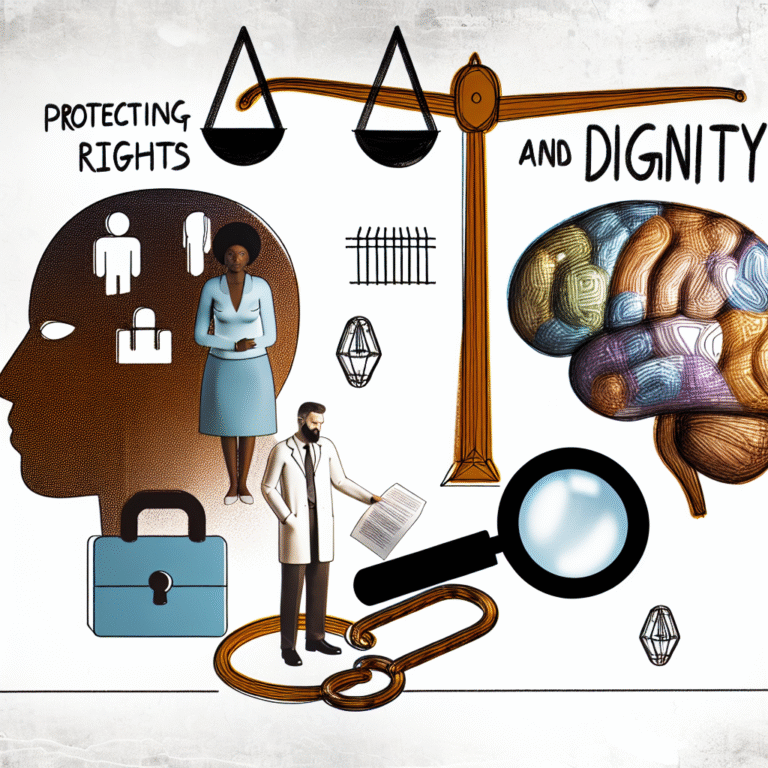
Maslow Revisited: Applying the Hierarchy of Needs in Modern Society
Introduction: The Enduring Relevance of Maslow’s Theories
In an age characterized by rapid change and innovation, one psychological framework continues to resonate with remarkable clarity—Maslow’s Hierarchy of Needs. Originally proposed by Abraham Maslow in 1943, this theory outlines a pyramid of human motivation, ranging from basic physiological requirements to the pursuit of self-actualization. As we navigate the complexities of modern society, the insights provided by this hierarchy become increasingly essential, not just for psychologists or educators but for everyone striving for personal and collective growth. "Maslow Revisited: Applying the Hierarchy of Needs in Modern Society" offers a lens through which we can evaluate well-being, motivation, and success in an ever-evolving landscape.
Understanding Maslow’s Hierarchy of Needs
The Five Levels of the Pyramid
At its core, Maslow’s Hierarchy consists of five levels:
- Physiological Needs: Basic survival requirements such as food, water, warmth, and rest.
- Safety Needs: Security and safety encompassing physical, emotional, and financial stability.
- Love and Belongingness Needs: Social connections, friendships, and intimate relationships.
- Esteem Needs: Confidence, achievement, and the respect of others.
- Self-Actualization Needs: The realization of personal potential, self-fulfillment, and personal growth.
This structure suggests that individuals must satisfy lower-level needs before they can address higher-level ones. In the following sections, we will explore how these concepts manifest in today’s world.
Contemporary Relevance of the Hierarchy
The landscape of human needs has evolved, influenced by technological advancements, globalization, and social change. By revisiting Maslow’s work, we can gather unique insights into how these needs still guide human behavior and societal trends.
Exploring Case Studies: Real-World Applications
Case Study 1: Workplace Well-Being in Tech Companies
In the tech industry, companies such as Google and Adobe have embraced Maslow’s principles to enhance employee well-being and productivity. Their approaches often emphasize safety and belongingness needs by fostering inclusivity and open communication channels.
Analysis: Innovative HR policies have led to higher job satisfaction and reduced turnover. By addressing these needs, companies not only improve their culture but also enhance productivity—demonstrating that Maslow’s theories are indeed applicable in the modern workspace.
Case Study 2: Mental Health Initiatives in Schools
Schools across various regions have begun to adopt frameworks that prioritize students’ psychological safety and emotional support. Programs focused on building social connections and addressing esteem needs are paramount.
Analysis: Schools that actively engage in promoting mental well-being see a marked improvement in student outcomes. By translating Maslow’s hierarchy into educational policies, these institutions are creating environments conducive to learning and growth.
Case Study 3: Personal Development in Digital Communities
Online platforms, such as those focused on personal development (like Coursera and LinkedIn Learning), illustrate how self-actualization needs are being addressed in modern society. These platforms provide access to educational resources, allowing individuals to pursue their passions and enhance their skills.
Analysis: By giving people the tools for self-improvement, these platforms empower users to achieve their potential, supporting the idea that modern society plays a crucial role in facilitating self-actualization.
Visualizing Maslow’s Hierarchy in Modern Context
Table: Applications of Maslow’s Hierarchy in Various Sectors
| Hierarchy Level | Modern Application | Example Sectors |
|---|---|---|
| Physiological Needs | Basic necessities programs | Social Services, Nonprofits |
| Safety Needs | Job security measures, safe work environments | Corporations, Educational Institutions |
| Love and Belongingness | Community-building initiatives | Schools, Organizations, Online Platforms |
| Esteem Needs | Recognition systems, personal achievements | Workplaces, Sports Teams |
| Self-Actualization | Educational opportunities, personal growth tools | Online Learning, Coaching |
This table summarizes how different sectors of society apply Maslow’s theory to cater to the evolving needs of individuals.
Integrating Technology: A Modern Twist on Maslow
Digital Platforms and Needs Satisfaction
The rise of digital spaces has opened new avenues for fulfilling Maslow’s needs. Social media platforms address belongingness and esteem needs by allowing individuals to connect with others and gain recognition. However, these platforms can also pose challenges to mental health and self-esteem, necessitating a balanced approach.
Telehealth and Safety Needs
Telemedicine has emerged as a vital resource in ensuring that physiological and safety needs are met. By providing access to mental health care and physical health resources remotely, telehealth is a prime example of how technology can provide solutions aligned with Maslow’s hierarchy.
The Role of Social Justice and Community in Addressing Hierarchical Needs
Case Study 4: Community Engagement and Safety Needs
Organizations dedicated to social justice, such as the NAACP and local advocacy groups, illustrate the importance of safety needs within marginalized communities. By fostering safe spaces and advocating for policy changes, these organizations help individuals achieve a sense of security.
Analysis: Addressing systemic issues often translates to meeting fundamental human needs. When communities work together to enhance safety and belonging, they create environments where individuals feel empowered to pursue higher-level needs.
Case Study 5: Building Inclusive Societies
Cities worldwide are increasingly recognizing the importance of inclusivity in addressing belongingness and esteem needs. Initiatives aimed at diverse representation in local government and community programs directly impact how individuals view their role in society.
Analysis: When people feel seen and heard within their communities, their overall well-being increases. This sense of belonging is essential for motivating individuals to engage in community further and pursue self-actualization.
Conclusion: A Holistic View on Applying Maslow’s Hierarchy Today
While Maslow’s Hierarchy of Needs was conceived in a different time, its core concepts remain relevant in understanding modern societal dynamics. By revisiting Maslow’s framework, we can appreciate the interconnectedness of our needs and realize that addressing lower-level requirements creates pathways to higher-level fulfillment.
Actionable Insights
- Promote Workplace Well-Being: Organizations should prioritize employee safety and build a culture of belonging.
- Support Educational Initiatives: Schools must incorporate programs that foster emotional safety and social connections.
- Engage in Community Building: Individuals should engage in their communities to enhance feelings of belonging.
- Utilize Technology Wisely: Leverage digital platforms responsibly to meet modern needs while safeguarding mental health.
- Advocate for Social Justice: A commitment to social equity will not only uplift individuals but strengthen communities as a whole.
Ultimately, "Maslow Revisited: Applying the Hierarchy of Needs in Modern Society" is more than an academic examination—it is a call to action. As we strive for a balanced and fulfilling life, we must continuously apply these principles to enrich our personal lives and the broader world around us.
FAQs: Addressing Common Questions
1. How can I apply Maslow’s Hierarchy to my personal life?
Identify your current needs using Maslow’s framework. Start with physiological needs, then evaluate your safety, social connections, esteem, and personal growth.
2. Are there any criticisms of Maslow’s theory?
Yes, some critics argue that the hierarchy is too rigid and may not address individual differences or cultural variations in needs.
3. How relevant is Maslow’s theory today?
Maslow’s theory remains relevant as it provides a foundational understanding of human motivation. Its principles can still be seen in workplace policies, educational frameworks, and community initiatives.
4. Can Maslow’s Hierarchy be applied in non-Western cultures?
Absolutely, though adaptations may be necessary to respect cultural differences and values, many aspects of the hierarchy can resonate globally.
5. What role does self-actualization play in mental health?
Self-actualization is vital for mental health as it empowers individuals to pursue their passions and potential, contributing to overall well-being and life satisfaction.
By reflecting on Maslow’s insights and applying them deliberately in our lives, we set the stage for richer experiences and greater fulfillment, resonating through both personal growth and collective societal advancement.

















